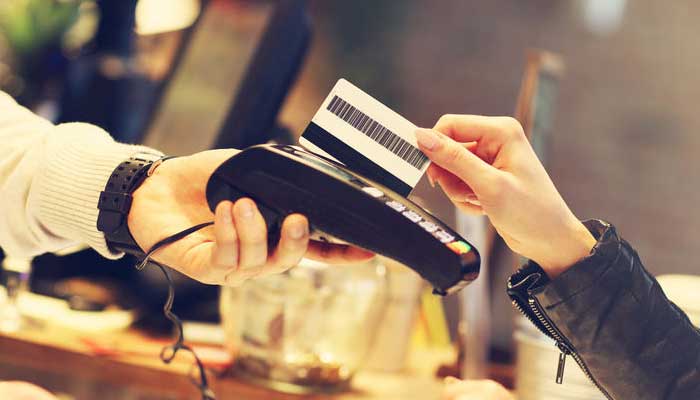Having provided the best merchant account solutions since 2001, we’ve long said if only fraudsters around the world could use their creativity legally and constructively, e-commerce and storefront retail would be such a better place.
Wishful thinking. If nothing else, fraudsters get an ‘A’ for creativity.
Recently we came across another innovative credit card fraud tactic that involves damaging the chip of a credit card, then covering the chip with cellophane tape. The cardholder may say, ‘Yeah, I dropped my card on the sidewalk and it was stepped on.’ The damaged chip forces the cardholder to use the swipe option at the point of sale instead of the insert.
Experts call it ‘fallback fraud,’ when a nefarious consumer claims to have a damaged chip, thus must use the swipe pad when checking out. It is so genius, we almost wish we could see it in action. So how does a fraudster benefit from this method? First, a little history…
Credit card counterfeiters at work
Before the U.S. migrated to chip-enabled credit cards, the magnetic stripe was easy for counterfeiters to reprogram with the 16-digit numbers of legitimate cardholders. There are countless devices for sale online that do so. There are instructional YouTube videos to be viewed. And stolen credit card data has been for sale on rogue websites practically since the birth of the internet (remember Rescator.cc, arguably the most popular among stolen credit card credential retailers?).
So, when a consumer approaches the point of sale and is forced to use the credit card swipe option due to a damaged chip, red flags ought to fly up for merchants, checkout personnel and those credit card issuers noting purchasing irregularities from afar. We can think of several more signs.
Do not ignore these stats…
According to research from Auriemma Consulting Group, fallback fraud made for 20 percent of all counterfeit credit card transactions in 2017 (and nearly 5 percent of all instances of credit card fraud). In Q2 of 2018, fraudulent credit card use was comprised of only 11.5 percent – a rather low figure, but one that would likely escalate come Q4 and the holiday shopping season.
What are the characteristics of counterfeit credit cards?
Offering the best merchant account solutions means accommodating merchants with more than credit card payment processing schemes. We’ve always felt obligated to keep our network of e-commerce and POS merchants updated on the latest fraud tactics.
When looking to capitalize with stolen credit card data, there is a short window of opportunity for criminals until the card brands and the legitimate (albeit unlucky) cardholder discover they’ve been swindled. For our POS merchants faced with consumers claiming to have defective credit card chips, we offer some additional infamous characteristics for which to take note.
High ticket purchases
First things first. When in possession of a stolen card or even hacked credit card data, criminals tend to act fast. In addition to the consumer insisting on paying by swipe, s/he is at the checkout counter with a very high ticket item – an expensive piece of jewelry, a 70-inch screen monitor or a high-end laptop computer.
More than one high ticket item
Keeping in mind the short window of opportunity criminals have, some will incriminate themselves more by attempting to purchase several high ticket products similar to the few we mentioned – sometimes two or three large monitors, laptops or pieces of high-end jewelry – and perhaps claim them as gifts for others.
Many purchase attempts in a small window
A customer, fitting any or all of the aforementioned characteristics, comes to the checkout counter a second time, again with high ticket items? Why not? It worked the first time. Thus, s/he is trying their luck again. Of all the examples we’ve mentioned, this is a blatant giveaway that the customer is in possession of stolen credit card details.
Stopping fallback fraud with one easy step
Whenever a merchant is faced with a situation in which a customer claims to have a damaged chip and needs to use the credit card swipe option, the merchant is well within his or her rights to ask for valid identification (driver’s license or passport) to validate the cardholder. Prior to the rollout of EMV credit cards, soliciting identification was a common practice.
In addition to examining the cardholder’s name, comparing signatures on the card and receipt is advised.
What it means to offer the best merchant account solutions
Providing the best merchant account solutions means giving merchants every resource to not only get them accepting transactions, but keep them processing transactions. Merchants who fail to protect themselves and their businesses from fraudsters and hackers can ultimately lose their merchant account services. Everybody wins when merchants are seamlessly processing credit and debit card payments, from the consumer to the acquiring bank.
Ready to experience the best merchant account for your online or POS business? We prefer to talk about it first and foremost – our merchant services experts are on hand Monday through Friday (8 a.m. until 6 p.m.) at 1-800-530-2444.


